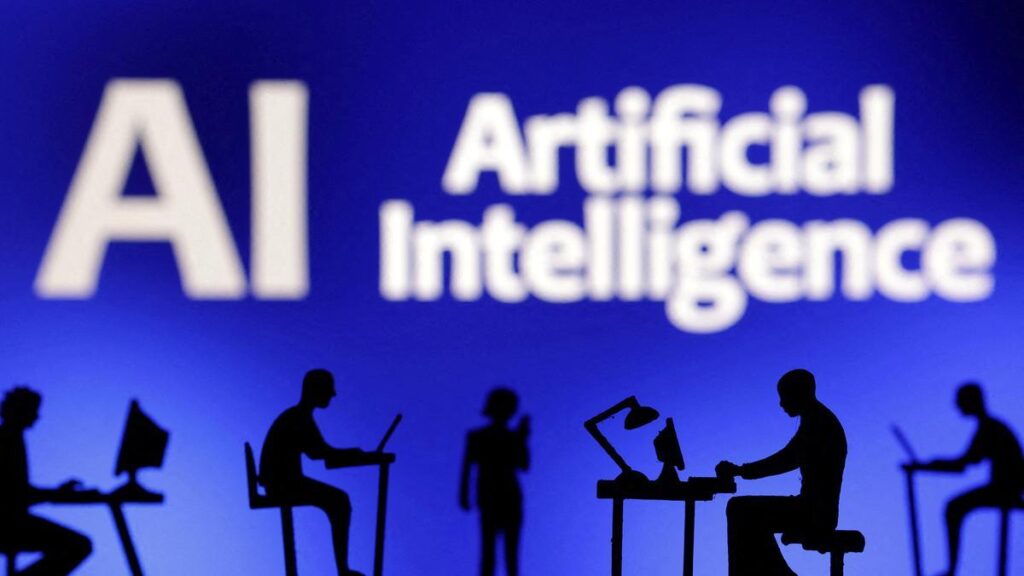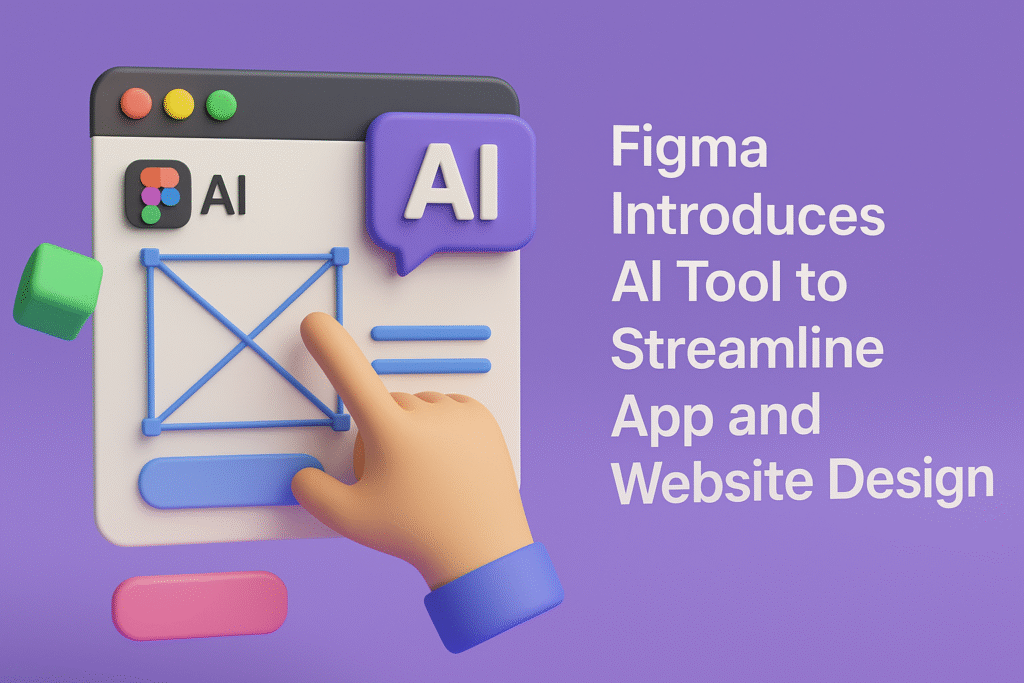In a massive leap forward for the design and development enterprise, Figma has launched an AI-powered tool aimed at reworking how apps and websites are created. This new characteristic, part of Figma’s broader imagination and prescient for layout automation, guarantees to simplify the product design method, reduce time-to-market, and permit groups of all sizes to awareness of creativity and person revel in rather repetitive, technical obligations.
Table of Contents
A New Era of Design Automation

Since its launch in 2016, Figma has positioned itself as a collaborative, cloud-primarily based layout platform that empowers groups to create user interfaces, prototypes, and layout structures in actual time. Now, with the advent of generative AI abilities, Figma is taking its task a step similar to that of enabling customers to move from concept to interface quicker than ever before.
This AI device lets users generate whole UI layouts and components genuinely with the aid of describing what they need in natural language. For example, typing “a cell login screen with email, password fields, and a login button” will activate the AI right away to create an easy, expert-searching design within seconds.
The implications are vast—specifically for startups, product managers, and developers who may additionally lack advanced layout talents but need purposeful, consumer-pleasant interfaces.
How the AI Tool Works
Figma’s new AI tool is powered by huge language models (LLMs) and is trained on thousands of layout styles, best practices, and UI/UX principles. Here’s the way it generally works:
- Prompt-Based Design: Users input a simple textual content prompt describing their desired interface.
- AI Interpretation: The version interprets the motive and translates it into a visible layout.
- Design Generation: Within seconds, a totally editable design is rendered immediately within the Figma workspace.
- Refinement Tools: Users can great-track the generated layout with the use of current Figma gear, patterns, and additives.
The AI also respects constraints like platform conventions (iOS vs. Android), accessibility pointers, and responsive design ideas. Over time, the tool will analyze personal interactions, improving its capability to generate on-brand and context-conscious designs.
Key Features
Figma’s AI tool comes filled with numerous core capabilities aimed at accelerating the layout workflow:
- Layout Generator: Create monitors like login pages, dashboards, or e-trade product grids with a single activation.
- Component Suggestions: Automatically generate reusable additives, which include buttons, cards, and navbars.
- Copywriting Assistance: Generate placeholder text and UX microcopy tailored to the context of the display.
- Design Variants: View opportunity layouts or topics and select the one that best suits your assignment needs.
- Code Preview (coming quickly): A companion feature that will permit designers and builders to preview front-quit code based totally on AI-generated designs.
These talents lessen the range of guide steps inside the traditional design process, allowing groups to be conscious of validating ideas as opposed to constructing everything from scratch.
Who Benefits from This Innovation?
The AI tool can empower a huge kind of customers:
Designers
Experienced designers can use the device to generate starting points or discover new ideas quickly. Instead of spending time on wireframes, they can focus on high-constancy layout, person trying out, and emblem alignment.
Developers
Developers who work without a committed design group can now effectively generate polished UI displays for their apps or web systems. This facilitates bridging the distance between back-quit functionality and the front-give-up layout.
Product Managers
PMs can swiftly prototype thoughts for stakeholders and consumers checking out, reducing dependence on design bandwidth and rushing up the generation cycle.
Startups and Indie Makers
Smaller teams without in-residence designers gain from immediate UI mockups and usable screens, enabling them to ship MVPs and take a look at functions quickly.
A Step Toward Democratizing Design
This AI launch is likewise part of a broader trend of democratizing product design. Similar to how structures like Canva delivered photo layouts to non-designers, Figma’s new tool makes UI/UX advent more handy to humans without specialised schooling.
Yet Figma is careful no longer to provide AI as an alternative for human creativity. Instead, the device is meant to augment the clothier’s workflow, supplying a sort of creative co-pilot that handles the grunt work whilst leaving important choice-making and branding to the human user.
Real-World Applications
Several early testers have already mentioned good-sized productivity gains. A SaaS startup shared that they have been capable of constructing their entire onboarding float layout in underneath 10 minutes using the AI device. Another organization used the tool to generate more than one homepage standard for a patron in less than an hour—something that would traditionally take numerous days.
Some ordinary actual-international use cases encompass:
- Building MVP interfaces for product validation
- Creating short design variations for A/B and trying out
- Rapid prototyping for the duration of user research classes
- Auto-generating form UIs, dashboards, or e-commerce pages
Addressing Concerns: Quality, Privacy, and Originality
While the tool is strong, Figma has also taken steps to deal with common worries with generative AI:
Design Quality
The AI is tuned to produce clean, consumer-pleasant layouts that comply with common design heuristics. However, it is now not ideal, and Figma encourages customers to check and refine outputs before finalization.
Data Privacy
Figma showed that person-generated statistics aren’t used to train the public models. Organizations using the tool in group or organization plans can decide on custom AI workflows whilst fully manipulating their facts.
Creativity and Originality
One unusual fear is that AI-generated designs may cause “template fatigue” or a sea of lookalike interfaces. To counter this, Figma’s device supports stylistic customization, branding inputs, and human refinements. It acts as a starting point—not the final product.
Industry Impact
The release of this tool places Figma in direct opposition with emerging platforms presenting AI-first design workflows. While startups like Galileo AI and Wizard have made headway, Figma’s large user base and integration into present design workflows provide it a sturdy competitive gain.
It also raises new questions for the future of design education. If plenty of the early paintings in UI design become computerized, future designers may be conscious of structure thinking, branding, motion design, and consumer studies.
For agencies, this device represents a possibility to lessen layout bottlenecks, speed up time to market, and empower cross-useful groups to do more independently.
What’s Next for Figma?
The AI rollout is just the beginning. According to Figma’s product roadmap, numerous new AI functions are on the horizon:
- Design to Code Conversion: Enabling export of generated screens into React, SwiftUI, or Flutter code.
- Brand-Aware Generation: AI that clings to your enterprise’s style manual or design machine routinely.
- AI for Collaboration: Smart recommendations throughout group design classes or comments that recommend visible alternatives.
These traits trace to a close-to-future wherein AI becomes an actual-time collaborator throughout the complete product improvement lifecycle.
Conclusion
Figma’s advent of an AI-powered design tool marks a pivotal moment in the evolution of digital product introduction. By combining the strengths of artificial intelligence with a flexible, cloud-based layout environment, the enterprise is making professional-grade layouts more reachable, quicker, and smarter.
While the device won’t replace designers, it’ll, in all likelihood, reshape the manner teams approach UI/UX paintings—turning them as soon as a time-eating venture of interface layout into a fluid, collaborative procedure powered by using activate-based total creativity.
In a global market in which speed, flexibility, and innovation are key, Figma’s AI assistant is ready to end up as a crucial asset in the contemporary product team’s toolkit.


